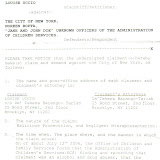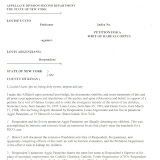 By Ed Silverman
By Ed SilvermanSeptember 10, 2008
Jeffery Thompson
Chief medical officer of Washington state’s Medicaid program
Over the past few years, atypical antipsychotics have been eating up a growing portion of state Medicaid budgets, from 4.5 percent in Arizona to 13.3 percent in Massachusetts. Several states, in fact, have sued one or more drugmakers for allegedly withholding side effect info or improperly promoting their meds, prompting Medicaid overpayments. However, the fastest growth is prescribing for children, sometimes for uses not approved by the FDA, such as ADHD. Jeffery Thompson, the chief medical officer of Washington state’s Medicaid program, is heading a consortion of 15 state Medical medical directors, who plan to issue a report early next year that examines prescribing trends, dosing, and demographics, among other things. We spoke about the issue…
Pharmalot: So why are you looking into this? Why is this an issue?
Thompson: The number one drug class in expenditures is atypical anti-pyschotics in almost every state. And the fastest-growing utilization is for both on and off label use in children. And as part of our jobs, we have a special relationship with foster care children, for instance, which means we should pay particular attention as prescribers use these to treat the children We also know there is wide variation within states and across states among utilization in kids, and we believe we should understand why that is.
Pharmalot: What, specifically, is your group examining?
Thompson: There’s a rapidly evolving constellation of diagnoses these drugs are being used for that are constantly evolving, with and without evidence or FDA labeling. And when there’s both limited evidence and labeling, it’s something we need to look at. For example, at what age can you diagnose somebody with bipolar disorder? Is it three years old? Seven years old? 12 years old? 18? There’s some evidence that it’s happening at all of those ages. But when is it appropriate to add an antipsychotic in addtion to a stimulant for treating ADHD in a child? And with off-label use, should there be an upper limit of dose by certain ages? Another question is when is it appropriate, or not safe, to combine multiple drugs when treating a child? We have some children who are on one, two, three or four at any one time. We see children being prescribed three to five times the FDA-approved adult dosages. So we’re looking at whether the trend indicates what I refer to as too young, too much or too many.
Pharmalot: How did the effort get started? And why aren’t more states involved?
Thompson: Last june, Washington state Medicaid convened a meeting of Medicaid medical directors, which is a nationwide group, to discuss integration of medical and mental health. And I posed a project where we would all look at utilization of kids getting antipsychotics. So we’re now actively pulling data. There directors representing.25 to 30 states at last year’s meeting and 42 states are in the network. Some states are examining data on their own, but all can share the results.
Pharmalot: Beyond compiling numbers, what do you hope to accomplish?
Thompson: We want to define our best practices and improve antipsychotic prescrbiing to children. In Texas, they’re working with their psychiatric community on algorithms, for instance. In many states, Eli Lilly works with state programs to provide report cards. Other states have specific guidelines. But we need to share what is being done in order to develop what can be considered a best practice, and then look at any additional steps, such as further clarification of state programs or gathering other data from state databases based on our findings. And we eventually hope to publish a paper.
Pharmalot: With so many states suing these drugmakers and the point made about budget dollars being spent, it sounds like this just as much about saving money, yes?
Thompson: I would say this project is not designed to save money. It’s designed to improve the health and safety of our children. If you look at our data dictionary, cost has a deminimus amount of activity in this project. It’s actually one very small component of the data we’re looking at. Most data we’re pulling relates to safety. Again, our primary hope is to improve health and safety of prescribing the drugs to children and reduce unneeded variation in care.
Pharmalot: To what extent is the pharmaceutical industry involved?
Thompson: Well, I mentioned earlier that some states have arrangements with Lilly to monitor prescribing trends. But the effort is independent of the industry. The Agency for Health Care Research and Quality is underwriting the project. We have the sanction and approval of state medicaid directors and state mental health directors, and these groups are actually doing the work, along with researchers at Rutgers University. I know my own state, the state of Washington, has invited pharmaceutical companies to meet with our mental health network group at all times to ensure there is appropriate use of medications. Apart from that, any findings from the study will be shared with the industry.
You can make comments here: http://tinyurl.com/Antipsychotics-Kids-States
Thank You ... psych_news@psychsearch.net for sharing this story























No comments:
Post a Comment